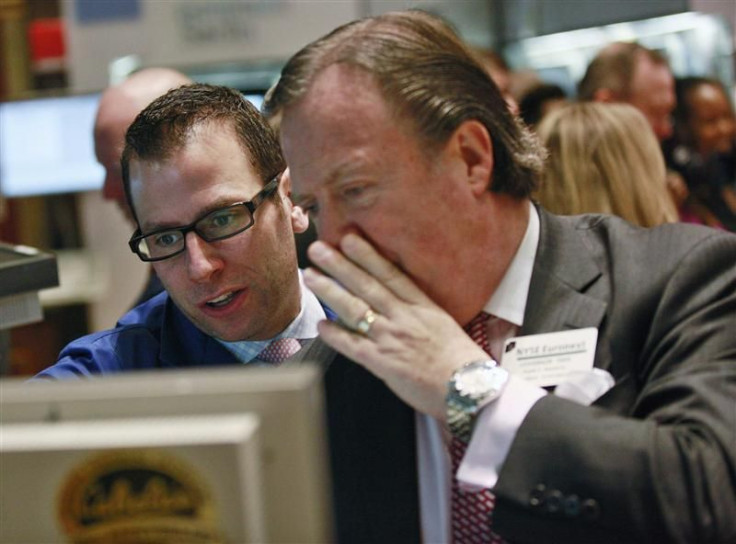Stock-Market Indicators Forecasting Slump in Near Future

The major U.S. equity indices floated close to yearly highs Friday, but extremely low volumes of trading, divergences in the behavior of important sub-indices, and other technical indicators suggested stocks might be in for a price-slashing correction soon.
We believe that the stock market is in the process of topping out from a short-term perspective and think that the blue-chip indices will have to endure a minor haircut before the next upleg begins, Mark Arbeter, chief technical strategist at S&P Capital IQ, wrote in a note to clients Friday.
The topping out was clear from several indicators. The benchmark Dow Jones Industrial Average was trading at 12,953.39 late Friday, close to the psychologically important 13,000 level that it has not broken since 2007, before the last recession officially began. Meanwhile, the wider S&P 500 Index of U.S. equities hit an intraday high of 1,363.40, very near its 2011 peak of 1,370.58. And, early this month, the tech-focused Nasdaq Composite bested its high point of 2,887.75 last year.
But the upward pricing pressure exceeded what market strategists consider to be reasonable under current conditions. The S&P 500 relative strength index and its moving average convergence-divergence indicator, two popular momentum oscillators, were at levels indicating the market was overbought and could soon experience a slump.
The extremely low volume seen in the market recently also suggests a drop in equity prices could be forthcoming. Fund flows into U.S. equities have been declining even as the current rally has been going strong since October. A lot of the trading that is occurring is the result of programmatic computer-assisted high-frequency trading, which thrives in a low-volume market and has a bias toward inflating stock-price valuations.
Dow Theory
A powerful argument for the coming drop in equity prices is also being put forward by followers of the Dow Theory, an investment philosophy that is more than 100 years old with many adherents among investors.
The theory ascribes special importance to the Dow Jones sub-indices, suggesting a variation in their momentum can be seen as a leading indicator of where the market is going. Such variation is being observed at the moment, as the Dow Jones Transport Index has not kept up with the lofty rise of indices elsewhere.
While the excitement in some parts garners much of the media's attention, the Dow Jones Transports, a key cyclical index, and sometimes a leading indicator for the overall stock market, has quietly rolled over, Arbeter wrote in his note.
Investment Psychology
There were also some less chart-focused, but still technical, considerations that could push for a retracement of recent stock-market gains.
Having exceeded some 2011 peak levels, investors might be tempted to take their money off the table, especially if they fear the trend of the past two years -- where stocks have plummeted in the late spring after rallying at the beginning of the year -- will repeat itself.
The close of earnings season could also factor in.
It is typical that once you get earnings coming to a close, you find the market takes a pause to digest, Bruce Zaro, chief technical strategist at Delta Global Asset Management in Boston, told Reuters.
Shortly before the closing bell, the Dow Jones Industrial Average was up 49.31 points, or 0.38 percent, at 12,953.39; the Nasdaq 100 was down 7.55, or 0.26 percent, at 2,952.30; and the S&P 500 was up 3.64, or 0.27 percent, at 1,361.68.
© Copyright IBTimes 2024. All rights reserved.





















